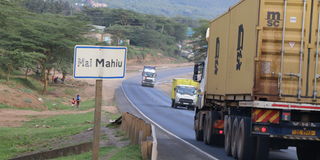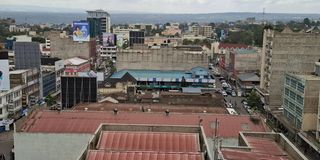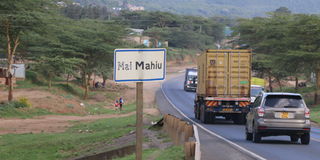The dark side of Nakuru: How the transit hub fuels the spread of disease

Mai Mahiu road which connects to the Northern corridor, mainly used by truck drivers.
Nakuru, strategically positioned along Kenya's Northern Corridor, has long served as a critical link connecting Mombasa to the Kenyan-Ugandan border.
While this geographical advantage supports trade and transport, it also poses significant public health challenges, exposing the county to the rapid spread of infectious diseases due to high mobility along the corridor.
The COVID-19 pandemic highlighted this vulnerability with Nakuru being among the hardest-hit counties, owing to its central role in trade and transit.

Ariel view of Nakuru City.
Elizabeth Kiptoo, Director of Public Health Services, recalls that Nakuru’s first COVID-19 case was reported in late May 2020, involving a traveler from Mombasa who unknowingly brought the virus while visiting relatives.
“Everyone passes through Nakuru, including individuals from other countries. It’s also a major business hub, with Naivasha hosting numerous international meetings and conferences. This constant influx of people from across Kenya and the world facilitated the spread of diseases like COVID-19,” Ms Kiptoo explains.
The county's proximity to Nairobi, its status as a transit hub, and the newly opened Naivasha Inland Container Depot (ICD) further exacerbated the situation, contributing to a rise in cases during the pandemic.
Ms Kiptoo also points to a recent case involving a truck driver who traveled from Rwanda through Uganda to Mombasa and tested positive for COVID-19 upon his return just two weeks ago.
Now, Nakuru faces another public health challenge: the MPOX outbreak. The disease has found a pathway through the same busy transportation routes, with the Northern Corridor once again playing a significant role in transmission.

Mai Mahiu road which connects to the Northern corridor, mainly used by truck drivers.
According to Ms Kiptoo, Nakuru has become a focal point for MPOX cases, bearing the burden of its strategic location along the corridor.
“The region’s position as a key transit point has contributed to the majority of MPOX transmission cases here,” she says.
As Nakuru navigates these recurring health crises, public health officials are focusing on strategies to mitigate the risks posed by its high level of connectivity while continuing to benefit from its geographical advantage.
The county is now confronting a surge in Mpox cases, with nine confirmed so far, primarily attributed to community transmissions.
In response, local health authorities have ramped up awareness campaigns and implemented stricter measures to contain the spread.
This ongoing challenge underscores Nakuru’s vulnerability, as it bears the weight of recurring health crises linked to the Northern Corridor. These crises not only impact the well-being of residents but also strain the county’s healthcare infrastructure.
Given this heavy burden, one pressing question arises: Can Nakuru’s healthcare system endure the relentless threats posed by its critical yet precarious position as a major transit hub?


